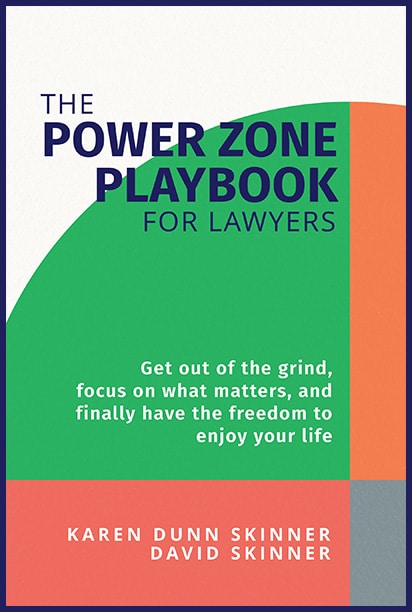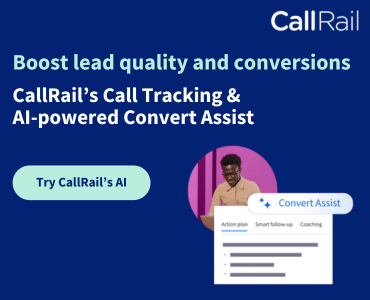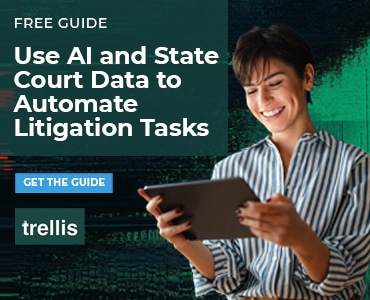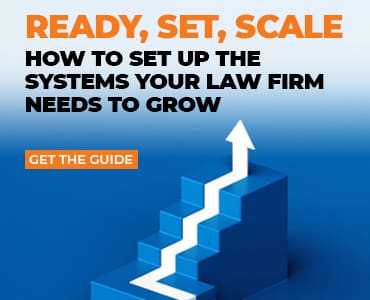Yes, you can use Chat GPT to streamline your tech stack audit, pinpoint overlapping features and help eliminate unnecessary spending for your law firm! Here’s how.

Table of contents
Technology enables us to practice at our peak, but with legal technology platforms and productivity apps constantly adding new features, we started to wonder if we’re overpaying — and underusing what we had.
Manually comparing everything in our tech stack seemed overwhelming. We’re always looking for useful ways to use artificial intelligence to save time, so when one of us spotted an article from WovenLegal on how to use ChatGPT to do an audit that would detect overlapping and extraneous services, we had to try it out.
Here’s how it worked. (Spoiler alert: This was not nearly as easy as the article suggests, but still a lot quicker than doing it manually.)
1. Create Your Tech Spreadsheet
I pulled all of our business support technologies into a single report listing each platform, with columns for monthly or annual cost, frequency of use, whether or not it provided a core business function, and the main thing we use it for. For example, the first few rows looked like this.
2. Load the Spreadsheet Into ChatGPT
I uploaded the spreadsheet into ChatGPT and used the following initial prompt, which I borrowed directly from the article.
PROMPT 1: Please review the attached spreadsheet of technology spend for my firm. Highlight any overlapping services or redundant expenses where multiple tools serve the same function. My goal is to eliminate unnecessary spending and streamline our tech stack.
Unfortunately, ChatGPT got a little hung up on my “Main Function” column and produced a list of overlaps based on what we use it for rather than what the platforms can actually do. Not helpful.
I tweaked the prompt to get the AI to look at each platform’s features and ignore the “Main Function” column.
PROMPT 2: Many of the tools listed have multiple features. Disregarding the “Main Function” column and looking at the totality of features that each program offers (features are not listed on the spreadsheet — you will need to research them), tell me where there is overlap between the various platforms.
This produced better results. I got a list of each tool’s core capabilities and functions and then a set of identified overlaps and recommendations. For example:
- Note-Taking and Document Collaboration:
- Overlap: Both Evernote and Google Workplace offer note-taking and document management features.
- Recommendation: Evaluate which platform better suits your team’s workflow. If deep integration with email and other productivity tools is essential, Google Workplace might suffice, allowing you to discontinue Evernote.
- Project Management and Task Tracking:
- Overlap: Trello provides project management capabilities, while Google Workplace can achieve similar outcomes using tools like Google Sheets or Google Keep.
- Recommendation: If your team requires specialized project management features like Kanban boards, Trello is beneficial. However, if basic task tracking suffices, consolidating within Google Workplace could reduce costs.
3. Do a Deeper Dive Into the Systems and Platforms That Matter Most to You
Workflows and task management are critical to our business. I was curious to see if we could consolidate our task management into a single tool. But ChatGPT only compared Trello with Google Suite. It’s important to dig deeper with AI. I know that Evernote now offers some task management because one of our coaching clients uses it for his firm. ChatGPT didn’t consider this, so I asked a more specific question.
PROMPT 3: How does Trello compare with the task management features now available in Evernote? In particular, consider the two in the context of a small team.
Now we were getting somewhere!
ChatGPT produced side-by-side comparison tables for three categories:
- Task creation and structure
- Collaboration and team visibility
- Automation and customization
It then provided the below table of best-use cases for small teams, as well as final recommendations:
| Trello | Evernote |
|---|---|
| – Team project management | – Personal or department-level task lists |
| – Agile / Kanban workflows | – Task lists linked to meeting notes or research |
| – Client or matter-based project tracking | – Small-scale project notes with embedded tasks |
| – Multi-step, collaborative workflows | – Storing procedures, then assigning related tasks |
Final Recommendation for Small Teams
- If your small team needs a visual, collaborative system where everyone can clearly track project stages and individual responsibilities, Trello is the better choice.
- If your team primarily works from documents, meeting notes, and internal knowledge bases, and you just need lightweight task management embedded in documentation, Evernote could suffice.
ChatGPT went further and provided the pros and cons of consolidating everything into Trello versus putting it all into Evernote, as well as a hybrid approach — using Evernote for knowledge management and Trello for workflows and task management. It gave a final recommendation.
My Recommendation for a Small Law Firm
- If you value simplicity and cost savings → Consolidate into Trello
- If internal documentation is mission-critical → Stick with the hybrid model (Evernote + Trello).
- If you want a truly all-in-one replacement → Consider ClickUp or Notion, which cover tasks, projects, and docs.
Because the point of this exercise was to determine the most cost-effective, consolidated tech stack, I decided to use ChatGPT to help me decide on a single tool that would accomplish what we needed. This is where things got even more interesting. It gave me the core functionality and pros and cons of a series of possible tools, including why a firm might consider one or the other and the types of firms each would be best for.
Final Recommendation Based on Your Needs
| Need | Best Alternative |
|---|---|
| All-in-One Note + Task Management | Notion |
| Project Management with Built-in Docs | ClickUp |
| Microsoft-Centric Workflows | OneNote + Planner |
| Customizable Workflows | Coda |
| Advanced Task and Team Management | Asana |
It then offered to help me plan the transition from our current hybrid Trello/Evernote system to any one of the tools. I said, “Sure, give me a plan to transition from Trello and Evernote to ClickUp.”
Chat GPT produced a phased migration plan, with tasks and milestones to be accomplished in each phase, instructions and anticipated timing. It also offered to create template workspaces I could set up in ClickUp with the appropriate folders, lists and custom views, along with a list of automations and integrations to streamline and automate workflows.
All of this took about five minutes from Prompt 1 to the generation of the ClickUp migration template.
So, Can You Use ChatGPT to Audit Your Tech Stack?
Absolutely!
Is it perfect? No.
Be prepared to tweak your prompts as you go along, and make sure you start with a clear picture of the problems you’re trying to solve with technology. ChatGPT can quickly identify some key overlaps in your technology and provide alternatives for consolidating your tools, increasing your efficiency, and reducing your spending. It will even show you, step by step, how to migrate between tools.
Is it a useful exercise with the potential to be a totally absorbing rabbit hole?
You bet … have fun!

Get the Power Zone Playbook for Lawyers
By Karen Dunn Skinner and David Skinner
Get out of the grind and into your power zone! Learn to align the work you do with the work you love, finding the sweet spot where your expertise, passion, and client needs intersect. It’s here, in your Power Zone, that you will discover the secret to a thriving practice.
Everything you need is in your Playbook.
More Process Improvement Tips for Your Law Practice
- Got a Process for Your Processes? Create Law Firm SOPs in 5 Easy Steps
- 5 Tips to Make Time Entry Less Painful for Lawyers
- Law Firm Intake: 3 Tips to Save Time and Convert More Clients
- New Client Onboarding: 5 Tips to Win Over New Clients
- Time to Build Your Team: 5 Steps to Improve Your Hiring Process
- From Hire to Higher: 6 Ways to Improve Employee Onboarding
- Dread the Law Firm Annual Planning Process? 5 Ways to Make It Easier and More Fun
- Lawyer Conflict Checks: 5 Tips to Tune Up Your Process
- Want to Get Paid Faster? 5 Ways to Fix Law Firm Invoicing
- Who’s Answering Your Phones? 3 Tips to Improve Your Law Firm’s Call-Answer Process
Karen Dunn Skinner and David Skinner help lawyers and legal professionals build more efficient, productive and profitable practices. They’re the co-founders of Gimbal Lean Practice Management Advisors and lawyers with over 20 years of experience each in Canada and Europe. Together, they’re the exclusive Global Advisors on Legal Process Improvement to the International Institute of Legal Project Management. They write and speak regularly, facilitate legal process improvement projects across North America, and have taught Gimbal’s LeanLegal® approach to thousands of legal professionals.
Image © iStockPhoto.com.

Don’t miss out on our daily practice management tips. Subscribe to Attorney at Work’s free newsletter here >















